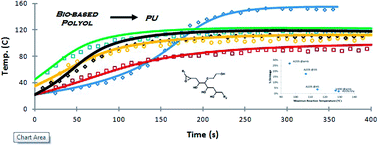Impact of the maximum foam reaction temperature on reducing foam shrinkage
Abstract
One of the obstacles to displacing petroleum-based polyols with soy-based polyols in rigid urethane foam formulations is foam shrinkage, especially at displacements greater than 50%. The shrinkage is a result of partial vacuums forming in the closed-cell foam as reaction temperatures dissipate. It was hypothesized that the shrinkage was in part due to inadequate curing of the foam which was due to lower maximum-attained temperatures during the near-adiabatic foaming process. Foam formulation studies were performed to evaluate the correlation of peak temperature foam shrinkage. Two approaches were evaluated to increase peak temperatures: (a) preheating of the monomers prior to reaction and (b) use of bio-based glycerol as a co-reagent to increase the mixture hydroxyl number and respective maximum temperatures. The results show that as the maximum reaction temperature increases, foam shrinkage decreases. Both preheating and use of a glycerol co-reagent were effective for increasing peak temperatures and decreasing shrinkage. Experimental results were supplemented with a simulation of the foaming process to better understand the fundamental phenomena and to evaluate the effectiveness of the simulation to evaluate approaches to better utilize bio-based monomers in thermoset polymers.


 Please wait while we load your content...
Please wait while we load your content...